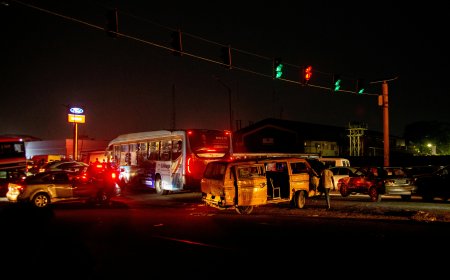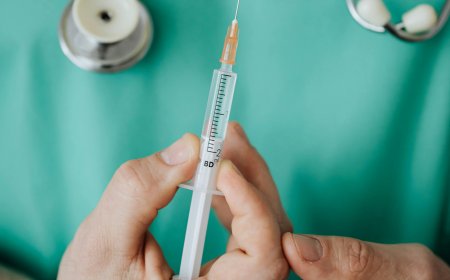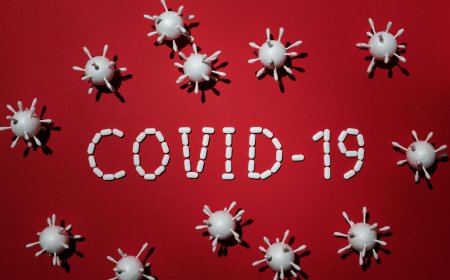Lewy Body Dementia: The Overlooked Brain Disorder
Lewy body dementia is a misunderstood illness affecting memory and movement. Here’s what you need to know about this complex condition.

When Robin Williams died in 2014, the world mourned a comic genius. What many didn’t realize at the time was that behind the laughter, Williams had been fighting a devastating neurological disease. Only after his death did his family reveal the culprit: Lewy body dementia (LBD).
Since then, awareness has grown, but compared to Alzheimer’s or Parkinson’s, Lewy body dementia remains less understood, underdiagnosed, and often misinterpreted. For patients and families, the journey can be as bewildering as the illness itself.
This is the story of a disease that hides in plain sight—and the fight to bring it into the public conversation.
What Is Lewy Body Dementia?

Lewy body dementia is a progressive brain disorder caused by abnormal protein deposits—called Lewy bodies—inside nerve cells. These deposits disrupt communication in the brain, leading to a mix of cognitive decline, movement difficulties, and psychiatric symptoms.
Unlike Alzheimer’s, which primarily affects memory, LBD sits at the crossroads of dementia and Parkinson’s disease. Patients may experience:
- Memory loss and confusion
- Hallucinations, often vivid and frightening
- Movement problems resembling Parkinson’s (tremors, stiffness)
- Fluctuations in alertness and attention
- Sleep disturbances, including acting out dreams
The complexity of symptoms makes LBD one of the most challenging neurological conditions to diagnose and treat.
The Rising Prevalence in Tier-1 Nations
In the United States, United Kingdom, Canada, and Australia, LBD is emerging as a major public health challenge. Estimates suggest it is the second most common form of progressive dementia after Alzheimer’s, affecting more than 1.4 million Americans alone.
Yet experts believe many cases are overlooked. Families often receive vague diagnoses of “Alzheimer’s” or “Parkinson’s with dementia,” delaying appropriate care.
With aging populations in Tier-1 countries, neurologists warn that cases of Lewy body dementia will increase sharply in the coming decades, placing new strains on healthcare systems.
Symptoms That Set It Apart
One of the defining features of LBD is its unpredictability. A patient may appear sharp and alert in the morning, only to become confused or disoriented by afternoon. This fluctuation can be deeply unsettling for loved ones.
Common symptoms include:
- Cognitive changes: confusion, poor problem-solving, difficulty planning tasks
- Visual hallucinations: often of people, animals, or children not actually present
- Parkinsonian features: tremors, slowed movements, shuffling gait
- REM sleep disorder: acting out dreams, sometimes violently
- Autonomic dysfunction: blood pressure drops, fainting spells, urinary issues
This constellation of symptoms means families and doctors must remain vigilant, as misdiagnosis is frequent and treatment options vary depending on accuracy.
The Emotional Toll: A Family’s Story
For families, Lewy body dementia is not just a medical diagnosis—it is a daily upheaval.
Take the story of Margaret and her husband, John, in Manchester. At 72, John began seeing things that weren’t there: children playing in the hallway, strangers in the garden. Doctors initially suspected depression. Months later, his movements slowed, and memory lapses became more pronounced.
It was only after a specialist consultation that the truth emerged: Lewy body dementia.
For Margaret, the hardest part wasn’t just the caregiving—it was the unpredictability. “One day John would laugh at a shared memory, the next he wouldn’t recognize me,” she recalls. “It’s like living with two versions of the same person.”
Stories like Margaret’s highlight why LBD is often called the “chameleon of dementias.” Its shifting symptoms blur the lines between other neurological conditions, leaving families desperate for clarity.

Diagnosis and Medical Challenges
Diagnosing Lewy body dementia requires a combination of clinical evaluation, patient history, brain imaging, and sometimes specialized sleep studies. Yet even with advanced tools, misdiagnosis remains common.
Doctors often mistake LBD for:
- Alzheimer’s disease (due to memory loss)
- Parkinson’s disease (due to motor symptoms)
- Psychiatric disorders (due to hallucinations)
The lack of a single definitive test adds to the challenge. As one neurologist in Toronto put it: “If Alzheimer’s is a straight line, Lewy body dementia is a maze.”
Current Treatments and Research
There is no cure for Lewy body dementia. However, treatments can help manage symptoms:
- Cholinesterase inhibitors to improve cognitive function
- Parkinson’s medications for motor symptoms, though often with mixed results
- Melatonin and other sleep aids for REM disorder
- Supportive therapies like physical therapy, occupational therapy, and counseling
Researchers are exploring whether drugs targeting protein buildup could slow disease progression. Early clinical trials are underway, offering a glimmer of hope for patients and families.
The Caregiver’s Burden
Caring for someone with LBD is an emotional marathon. Caregivers often face:
- Sleepless nights due to the patient’s restlessness
- Anxiety over sudden hallucinations or wandering
- The heartbreak of fluctuating recognition
- Financial strain from medical expenses and home adjustments
Support groups and advocacy organizations in the U.S., UK, Canada, and Australia are pushing for more resources, training, and respite services for caregivers. For many, sharing stories in community forums is a lifeline.
Why Awareness Matters
Awareness campaigns for Alzheimer’s and Parkinson’s have gained global traction. Lewy body dementia, however, lags behind. Many still don’t know what it is until they encounter it directly.
High-profile cases, like Robin Williams’, have started conversations. But neurologists stress that public understanding remains dangerously low.
Greater awareness could lead to:
- Earlier diagnosis and treatment
- Better caregiver support
- Increased funding for research
- Reduced stigma around psychiatric symptoms
In short, knowledge is power—for both patients and society.
Conclusion: Facing the Hidden Giant of Dementia
Lewy body dementia may not yet be a household name, but it is a growing force in healthcare. For families, it means navigating confusion, heartbreak, and resilience. For doctors, it demands sharper diagnostic tools. For society, it’s a call to broaden the conversation on dementia beyond Alzheimer’s alone.
As populations age across Tier-1 nations, this disorder will increasingly test not only medical systems but also the bonds of families and communities.
The lesson is clear: to face Lewy body dementia, we must bring it out of the shadows.
FAQs
1. Is Lewy body dementia the same as Alzheimer’s?
No. While both are dementias, LBD also causes movement issues and hallucinations, setting it apart.
2. Can Lewy body dementia be cured?
Currently, there is no cure. Treatments focus on easing symptoms and improving quality of life.
3. What are early signs of Lewy body dementia?
Early signs may include fluctuating alertness, vivid visual hallucinations, and sleep disturbances.
4. How long do people live with Lewy body dementia?
Life expectancy varies but typically ranges from 5 to 8 years after diagnosis.
5. Why is Lewy body dementia hard to diagnose?
Its symptoms overlap with Alzheimer’s, Parkinson’s, and psychiatric disorders, leading to frequent misdiagnosis.
What's Your Reaction?
 Like
0
Like
0
 Dislike
0
Dislike
0
 Love
0
Love
0
 Funny
0
Funny
0
 Angry
0
Angry
0
 Sad
0
Sad
0
 Wow
0
Wow
0





































































